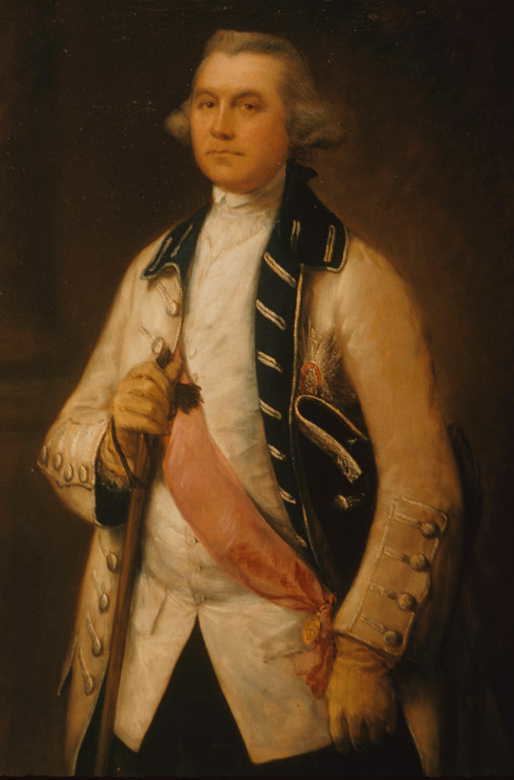Resting place Bath Abbey Title Sir Died January 8, 1787 Nationality English Children daughters Spouse Susanna De Lancey | Occupation Soldier Name William Draper | |
 | ||
Similar People Manuel Rojo del Rio y Vie, Simon de Anda y Salazar, Muhammed Yusuf Khan, Marquis de Bussy‑Castelnau, Thomas Arthur - comte de | ||
Lieutenant General Sir William Draper KCB (1721 – 8 January 1787), was a British military officer who conquered Manila in 1762 and was involved in the unsuccessful defence of Menorca in 1782. He was also involved in 1774 with a key meeting that agreed on an early set of cricket rules including the leg before wicket rule.
Contents
Biography
Draper was born in Bristol, then the second largest city in England, to a young Customs Officer. His father died the following year and the family struggled for money for many years, spending some time in India.
Draper was educated at Eton, to which he won a scholarship in 1733, and King's College, Cambridge.
In 1744, during the War of Austrian succession he became an Ensign in Lord Henry Beauclerk's regiment, adjutant in the 1st Foot Guards in 1746, and a lieutenant and captain in 1749.
In 1756 he married his first wife, Caroline, daughter of Lord William Beauclerk. He was also married with Eliza, she left (forsook) him 1773 in Bombay.
Seven Years' War
In the Seven Years' War he commanded the 79th Regiment of Foot, raised by himself, at the Siege of Madras in 1758–59.
A colonel in 1762, he had his greatest triumph when he led together with Vice-Admiral Samuel Cornish an expedition against Manila, capturing the city on 6 October 1762. The British occupation lasted until 1764, after which it was returned to Spain. During the capture Draper had signed an agreement, known as the Manila Ransom, by which the Spanish would pay the British a large amount of money. A large amount of plunder had also been taken, as Manila served as a trading base. News of Manila's fall arrived too late to affect the Treaty of Paris, and under its terms the British were compelled to return the city.
Peacetime
Draper returned home expecting to receive commendations for his capture of Manila, but the reaction was more mixed. In 1765 he was colonel of the 16th Regiment of Foot. In December 1765 he became Knight Companion of the Order of the Bath and defended the Marquis of Granby against Junius in 1769.
In 1769 he lost his wife and went on a tour through the American colonies. At New York, he married Susanna De Lancey, daughter of Oliver De Lancey, the head of one of the leading families in the Province of New York. Draper entertained a hope that he might be appointed as a Royal Governor, but this came to nothing.
In 1774, Draper chaired the committee that formulated some early laws of cricket. They were settled and revised at the Star and Garter in Pall Mall on Friday 25 February 1774. The committee included the Duke of Dorset, Charles Bennet, 4th Earl of Tankerville, Harry Peckham and other "Noblemen and Gentlemen of Kent, Hampshire, Surrey, Sussex, Middlesex, and London". This meeting was one of the earlier sets of cricket rules and is acknowledged as being the first where the Leg before wicket rule was introduced.
American War of Independence
A lieutenant-general in 1777, he became lieutenant-governor of Menorca, 1779–82, until the island was lost to the French and Spanish in the Battle of Menorca. He preferred unsubstantiated charges of misconduct against Lieutenant General James Murray, who had suspended him. He was reprimanded by a general court martial in 1783.
He died on 8 January 1787 and was buried in the old Abbey Church in Bath, where a monument has been erected to his memory.
